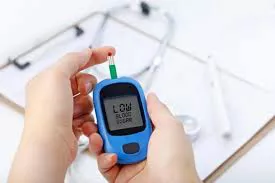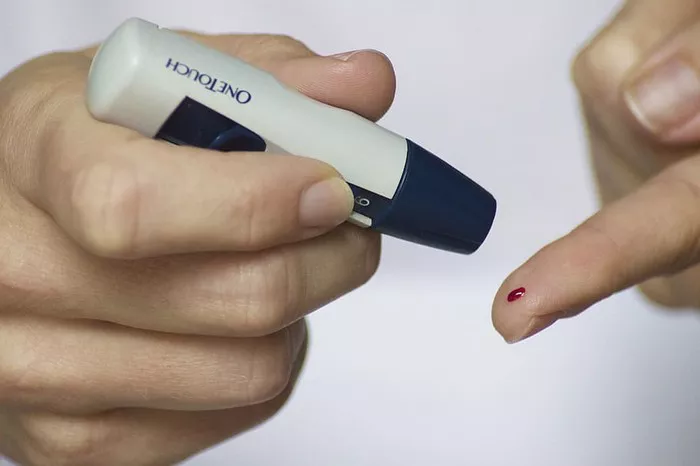Blood sugar monitoring is a critical component in the management of diabetes, whether for type 1, type 2, or gestational diabetes. Accurate blood glucose readings are essential for making informed decisions about diet, exercise, and medication. With advancements in technology, the market is flooded with a variety of blood sugar monitors, each offering unique features. This article delves into the essentials of blood sugar monitoring, reviews the top monitors available, and provides guidance on choosing the best one for your needs.
The Importance of Blood Sugar Monitoring
Blood sugar levels need to be tightly controlled in diabetes management to prevent both acute and chronic complications. Acute complications include hypoglycemia (low blood sugar) and hyperglycemia (high blood sugar), both of which can be life-threatening. Chronic complications of poorly controlled diabetes include cardiovascular disease, neuropathy, nephropathy, and retinopathy. Regular monitoring helps in adjusting lifestyle choices and medications, ensuring blood sugar levels remain within the target range.
Types of Blood Sugar Monitors
There are primarily two types of blood sugar monitors:
Continuous Glucose Monitors (CGMs):
CGMs use sensors placed under the skin to measure glucose levels in the interstitial fluid continuously. These devices provide real-time glucose readings and can alert users to high or low blood sugar levels.
Blood Glucose Meters (BGMs):
BGMs require a small drop of blood, usually obtained from a finger prick, to measure blood sugar levels. These meters provide a snapshot of the blood glucose level at the time of the test.
Continuous Glucose Monitors (CGMs)
Advantages of CGMs:
- Provide continuous, real-time glucose readings.
- Offer alerts for hypo- and hyperglycemia.
- Reduce the frequency of finger pricks.
- Provide trends and patterns in blood sugar levels over time.
Disadvantages of CGMs:
- More expensive than BGMs.
- Require sensor replacement every 7-14 days.
- May cause skin irritation at the sensor site.
Blood Glucose Meters (BGMs)
Advantages of BGMs:
- Less expensive than CGMs.
- Provide immediate blood sugar readings.
- Widely available and easy to use.
- Require minimal maintenance.
Disadvantages of BGMs:
- Require finger pricks, which can be painful.
- Do not provide continuous monitoring.
- Limited in providing trends and patterns.
Criteria for Choosing a Blood Sugar Monitor
When selecting a blood sugar monitor, consider the following factors:
Accuracy:
Accuracy is the most critical factor. Inaccurate readings can lead to improper diabetes management, resulting in serious health risks. Look for monitors that meet the ISO 15197:2013 standard, which stipulates that 95% of the results should be within ±15 mg/dL of laboratory results for blood glucose levels less than 100 mg/dL and within ±15% for levels equal to or greater than 100 mg/dL.
Ease of Use:
The device should be user-friendly, with clear instructions and an easy-to-read display. This is particularly important for elderly patients or those with limited dexterity.
Features:
Consider the features that are important to you. This may include memory storage, data download capabilities, and compatibility with diabetes management apps. CGMs often come with additional features like trend graphs and alarms for hypo- and hyperglycemia.
Cost:
Cost includes not only the initial purchase price of the monitor but also the ongoing costs of test strips (for BGMs) or sensors (for CGMs). Check if your insurance covers the device and the associated supplies.
Customer Support:
Good customer support can be crucial, especially when dealing with a device that you will use frequently. Check for the availability of customer service and warranty options.
Top Blood Sugar Monitors in 2024
Continuous Glucose Monitors (CGMs)
1. Dexcom G6
The Dexcom G6 CGM system is one of the most advanced and popular CGMs available. It offers several features that make it stand out:
Accuracy: The Dexcom G6 is renowned for its accuracy, meeting and exceeding the ISO standards. It uses a sensor that measures interstitial glucose levels every 5 minutes.
Ease of Use: The G6 does not require fingerstick calibrations, making it easier to use compared to earlier models.
Features: It provides real-time glucose readings on a smart device or a receiver. The device has customizable alerts for high and low blood sugar levels and offers trend graphs.
Cost: The initial setup cost is higher, and sensors need to be replaced every 10 days. However, it is often covered by insurance.
Customer Support: Dexcom offers robust customer support, including a comprehensive user manual and online resources.
2. Abbott FreeStyle Libre 2
The FreeStyle Libre 2 is another top contender in the CGM market, known for its affordability and ease of use:
Accuracy: The Libre 2 provides reliable glucose readings and has a factory-calibrated sensor, eliminating the need for fingerstick calibrations.
Ease of Use: Users scan the sensor with a reader or a smartphone app to obtain glucose readings, which is simple and painless.
Features: It offers optional glucose alarms, real-time readings, and historical data with trend graphs.
Cost: The FreeStyle Libre 2 is more affordable compared to other CGMs, with sensors needing replacement every 14 days.
Customer Support: Abbott provides excellent customer support, with resources available online and through their customer service hotline.
3. Medtronic Guardian Connect
Medtronic’s Guardian Connect CGM is designed for those who want detailed glucose monitoring and data analytics:
Accuracy: The Guardian Connect is highly accurate, meeting ISO standards. It requires fingerstick calibrations.
Ease of Use: While it requires calibration, the system is straightforward to set up and use.
Features: The device offers predictive alerts up to 60 minutes before a high or low glucose event, and integrates with the Sugar.IQ diabetes assistant app for personalized insights.
Cost: It is one of the more expensive options, with sensors needing replacement every 7 days.
Customer Support: Medtronic provides comprehensive support, including educational resources and a dedicated customer service team.
Blood Glucose Meters (BGMs)
1. Accu-Chek Guide
The Accu-Chek Guide is known for its accuracy and user-friendly design:
Accuracy: The Guide meets ISO standards and provides consistent, accurate readings.
Ease of Use: It features a spill-resistant test strip container and an easy-to-read display. The strips require a small blood sample, making testing less painful.
Features: The meter has Bluetooth connectivity, allowing data to be synced with the mySugr app for comprehensive diabetes management.
Cost: The device is affordable, but the cost of test strips can add up. It is often covered by insurance.
Customer Support: Accu-Chek offers excellent support, including a mobile app, online resources, and a customer service hotline.
2. Contour Next One
The Contour Next One is celebrated for its high accuracy and smart features:
Accuracy: It exceeds ISO standards, providing highly accurate readings with minimal variability.
Ease of Use: The meter is compact and features a smart light that signals if the blood sugar level is within range.
Features: It connects via Bluetooth to the Contour Diabetes app, which offers detailed data logging and insights.
Cost: The meter itself is reasonably priced, but test strip costs can vary. Many insurance plans cover it.
Customer Support: Ascensia Diabetes Care offers robust support, including a helpful app and customer service.
3. OneTouch Verio Flex
The OneTouch Verio Flex combines simplicity with advanced features:
Accuracy: The Verio Flex meets ISO standards, ensuring accurate readings.
Ease of Use: It has a color-coded range indicator, making it easy to interpret results.
Features: The device connects to the OneTouch Reveal app, which provides personalized insights and trends.
Cost: It is moderately priced, with test strips being an additional cost often covered by insurance.
Customer Support: OneTouch offers comprehensive support, including online resources and a customer service hotline.
Comparing CGMs and BGMs
Accuracy and Reliability
Both CGMs and BGMs have made significant strides in accuracy. CGMs, with their continuous monitoring, provide a more comprehensive view of glucose trends and are excellent for spotting patterns and preventing hypo- and hyperglycemic events. BGMs, while offering snapshot readings, have become increasingly accurate and are sufficient for many people managing diabetes.
Convenience and User Experience
CGMs offer superior convenience with fewer finger pricks and continuous data. However, they require wearing a sensor on the body, which some users may find uncomfortable. BGMs are portable and easy to use but require frequent testing, which can be inconvenient and painful.
Cost Considerations
CGMs are generally more expensive upfront and have higher ongoing costs due to the need for sensor replacements. BGMs are less expensive initially, but the cost of test strips can add up over time. Insurance coverage can significantly impact the overall cost, and it’s essential to check with your provider.
Data Management and Integration
CGMs excel in data management, providing continuous data that can be integrated with apps and other devices for comprehensive diabetes management. BGMs also offer data management features, especially those with Bluetooth connectivity, but they provide less detailed data.
Making the Right Choice
Choosing the best blood sugar monitor depends on individual needs and preferences. Here are some considerations to help make the decision:
Lifestyle:
Active individuals or those with fluctuating blood sugar levels may benefit more from a CGM due to its continuous monitoring and alerts.
Those who prefer a simple, cost-effective solution and do not mind frequent finger pricks might opt for a BGM.
Budget:
Assess both the initial cost and the ongoing expenses of test strips or sensors. Insurance coverage can significantly influence this decision.
Comfort and Convenience:
Consider the ease of use and comfort of the device. CGMs, while convenient, require wearing a sensor, which some may find bothersome.
Data Needs:
If detailed glucose trends and insights are essential, a CGM offers comprehensive data management features.
For those who need basic readings for occasional checks, a BGM may suffice.
Support and Resources:
Look for devices with good customer support and educational resources. This can be crucial for troubleshooting and learning how to use the device effectively.
Future Trends in Blood Sugar Monitoring
The field of blood sugar monitoring is rapidly evolving, with advancements aimed at improving accuracy, convenience, and integration with other health technologies. Future trends include:
Non-Invasive Glucose Monitoring: Research is ongoing into non-invasive methods, such as wearable devices that measure glucose levels through sweat or tears, potentially eliminating the need for finger pricks and sensors.
Integration with Artificial Intelligence: AI can analyze glucose data to provide personalized insights and predictive analytics, helping users make proactive decisions about their diabetes management.
Enhanced Data Connectivity: Improved connectivity with smartphones, fitness trackers, and other health devices will provide a more holistic view of health and wellness, aiding in comprehensive diabetes management.
Personalized Health Solutions: As more data becomes available, personalized diabetes management plans will become more prevalent, tailored to individual needs and health patterns.
See also: What’s the Best Blood Glucose Monitoring System
Conclusion
Choosing the best blood sugar monitor involves careful consideration of accuracy, ease of use, features, cost, and personal preferences. Both CGMs and BGMs offer unique advantages, and the right choice depends on individual needs and lifestyle. Staying informed about the latest advancements in blood sugar monitoring technology can help individuals with diabetes make better decisions and achieve optimal health outcomes. With continuous improvements and innovations in this field, the future of blood sugar monitoring looks promising, offering hope for even better management of diabetes.
Related topics:
Which Finger to Use for Blood Sugar Testing

























